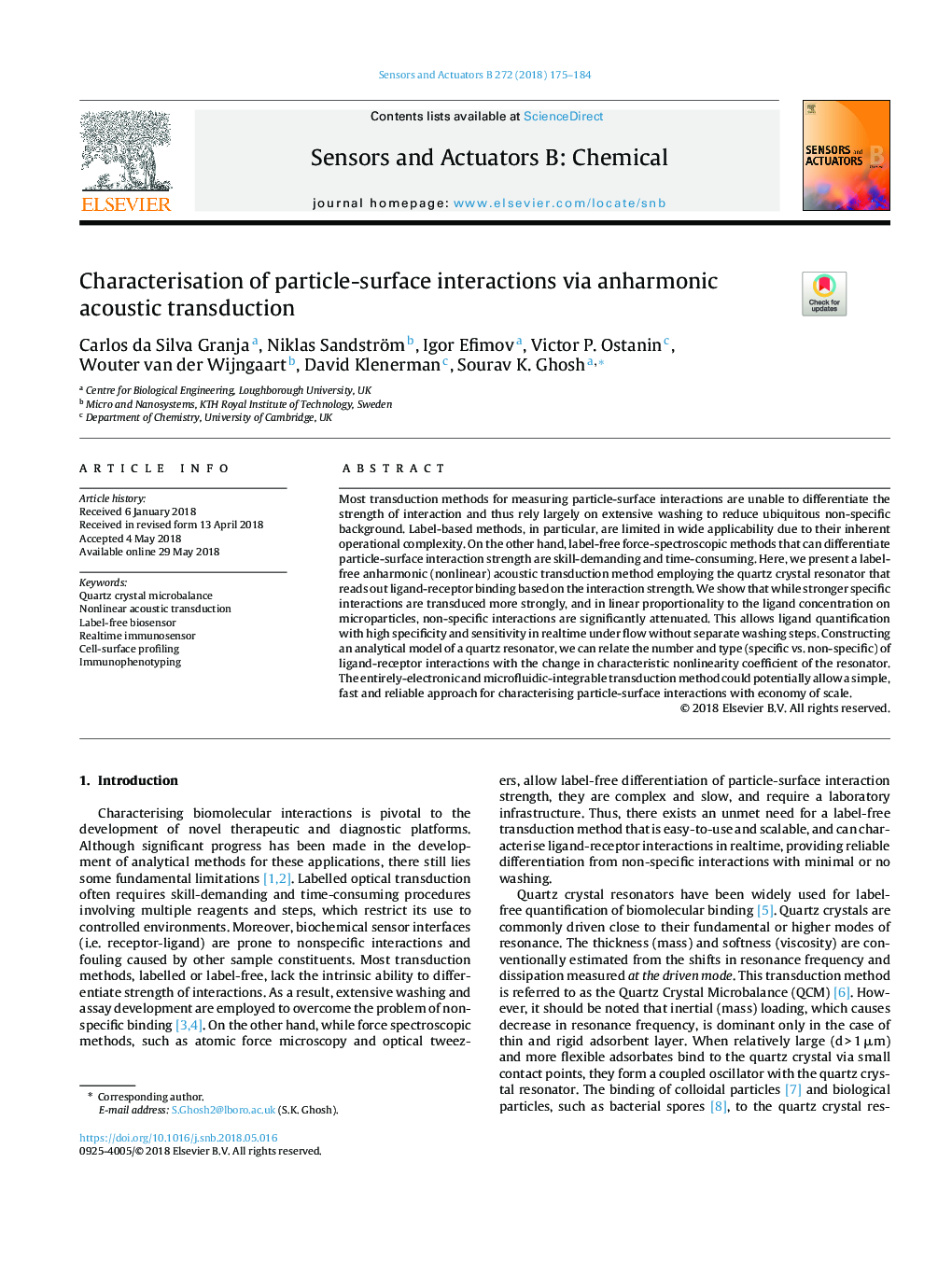| Article ID | Journal | Published Year | Pages | File Type |
|---|---|---|---|---|
| 7138833 | Sensors and Actuators B: Chemical | 2018 | 10 Pages |
Abstract
Most transduction methods for measuring particle-surface interactions are unable to differentiate the strength of interaction and thus rely largely on extensive washing to reduce ubiquitous non-specific background. Label-based methods, in particular, are limited in wide applicability due to their inherent operational complexity. On the other hand, label-free force-spectroscopic methods that can differentiate particle-surface interaction strength are skill-demanding and time-consuming. Here, we present a label-free anharmonic (nonlinear) acoustic transduction method employing the quartz crystal resonator that reads out ligand-receptor binding based on the interaction strength. We show that while stronger specific interactions are transduced more strongly, and in linear proportionality to the ligand concentration on microparticles, non-specific interactions are significantly attenuated. This allows ligand quantification with high specificity and sensitivity in realtime under flow without separate washing steps. Constructing an analytical model of a quartz resonator, we can relate the number and type (specific vs. non-specific) of ligand-receptor interactions with the change in characteristic nonlinearity coefficient of the resonator. The entirely-electronic and microfluidic-integrable transduction method could potentially allow a simple, fast and reliable approach for characterising particle-surface interactions with economy of scale.
Related Topics
Physical Sciences and Engineering
Chemistry
Analytical Chemistry
Authors
Carlos da Silva Granja, Niklas Sandström, Igor Efimov, Victor P. Ostanin, Wouter van der Wijngaart, David Klenerman, Sourav K. Ghosh,
